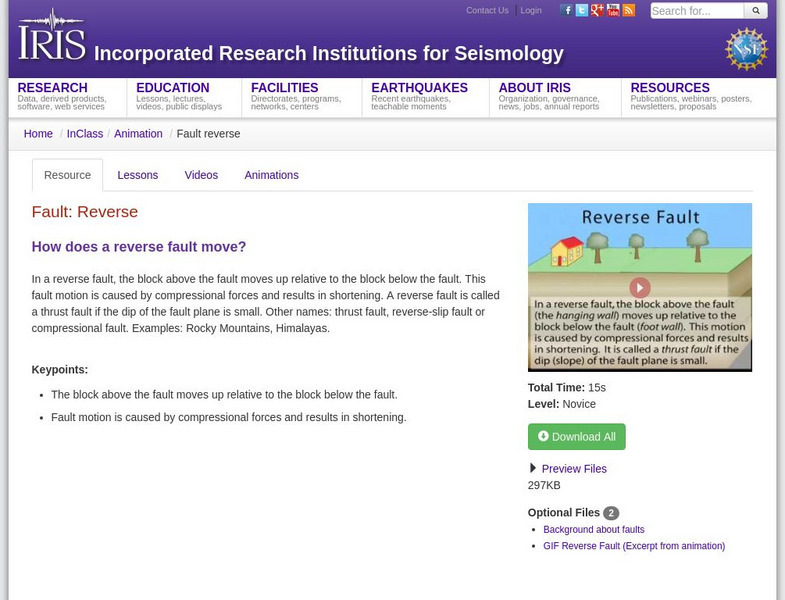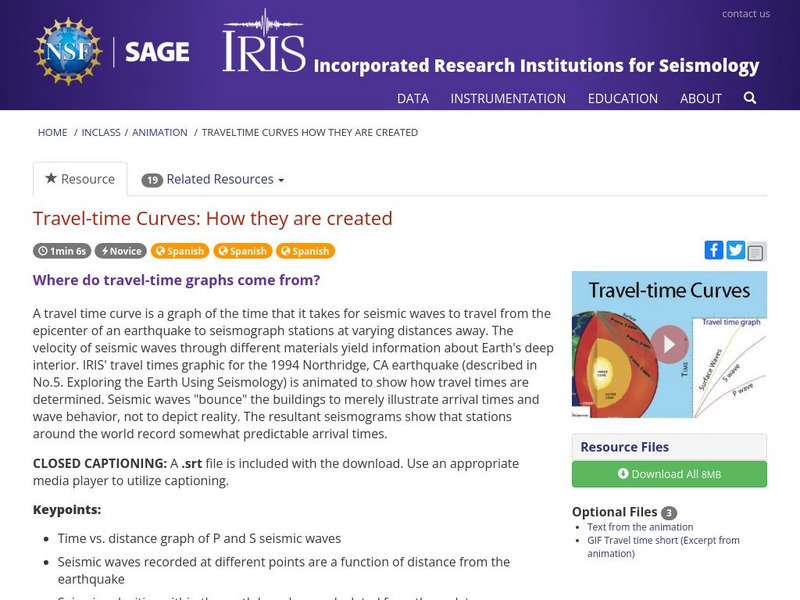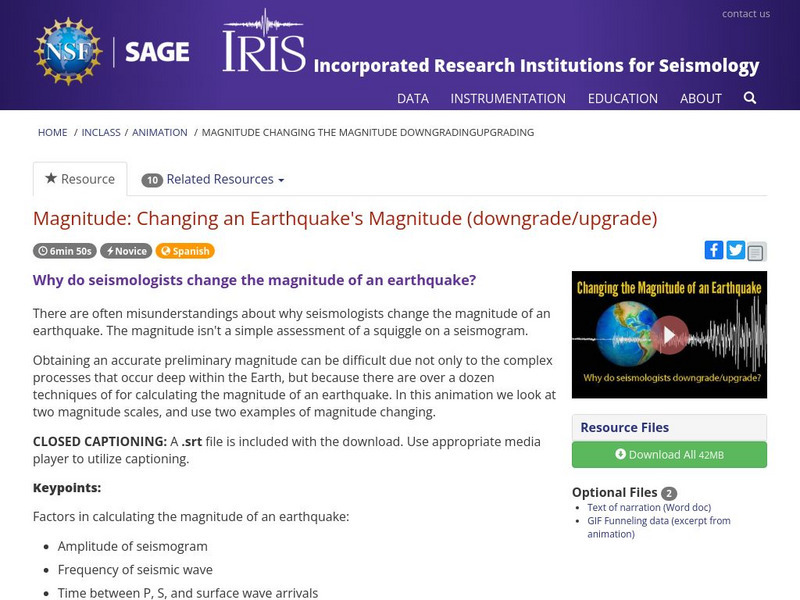SciShow
Why We Can't Predict Earthquakes
Earthquakes have the power to devastate entire communities—a little advanced notice could make a world of difference with an impending earthquake. So why can't they be predicted? Join Rose Bear Don't Walk for a new episode of SciShow,...
SciShow
How Ancient Buildings Became Accidental Seismographs
We use seismographs to record the time, location and magnitude of earthquakes as they happen. But in the last three decades, a new field of study has emerged that is learning to track these details about earthquakes of old using the...
Curated Video
Man On the Moon: Part 2
The extraordinary story of Apollo 11's lunar landing. What they found on the Moon and how they made it back to Earth. Physics - Our Solar System - Learning Points. Apollo 11 landed on the Moon on 20th July, 1969. The Apollo 11 astronauts...
Wonderscape
Understanding Earthquakes: The Role of Tectonic Movements
Dive into the dynamics of earthquakes, from the initial tremors to the science behind their measurement. Learn how seismologists use seismographs to detect seismic waves and locate epicenters, aiding in earthquake preparedness and the...
Curated Video
Shake Things Up
Dr. Forrester demystifies earthquakes. She explains how they are created.
Curated Video
Natural Disasters 1
Dr. Forrester explains what natural disasters are. She discusses earthquakes, tornados, and hurricanes in detail and talks about the impact of each.
Mazz Media
Wave
This live-action video program is about the word Wave. The program is designed to reinforce and support a student's comprehension and retention of the word Wave through use of video footage, photographs, diagrams and colorful, animated...
Visual Learning Systems
Measuring Earthquakes
The video explains how seismographs are used to detect and record seismic waves produced by earthquakes. It describes how the seismogram created by a seismograph can help scientists determine the time, epicenter, and focal depth of an...
Wonderscape
Science Kids: Earthquakes Around the World
This video provides an overview of earthquakes, including their causes, measurement, and notable earthquakes in history. It also discusses the importance of earthquake preparedness and provides tips on how to create an emergency plan and...
Getty Images
Seismograph records and registers powerful earthquakes, Philippines, Dec 2009
Seismograph records and registers powerful earthquakes, Philippines, Dec 2009
Khan Academy
The Mohorovicic Seismic Discontinuity, Cosmology and Astronomy
The phenomena observed in the behavior of waves and data received from seismographs can lead us to various conclusions about the densities of material waves passing through.
Incorporated Research Institutions for Seismology
Iris: Earthquakes Scattered Across the Globe Recorded by One Station
Animation features a gridded sphere that shows a seismic station recording 10 different earthquakes that are widely scattered. [1:22]
Incorporated Research Institutions for Seismology
Iris: Seismograms of Common Events: Compiled
A collection of seismic events recorded near Mount Saint Helens. The seismographs located at stations record seismograms like what are shown here. [2:10]
PBS
Pbs Learning Media: Earthquakes: The Seismograph
This video segment adapted from NOVA uses historical illustrations, photographs, and animations to explain how seismographs work, the difference between P and S waves, and the Richter scale.
US Geological Survey
U.s. Geological Survey: Earthquakes: Shadow Zone
An animation showing the area of the Earth that is not detectable by seismographs, known as the shadow zone.
Incorporated Research Institutions for Seismology
Iris: Travel Time Curves: How They Are Created
An animation which illustrates how the travel time of an earthquake is measured. What alters the velocity of the waves? [1:06]
Incorporated Research Institutions for Seismology
Iris: Seismograph: Horizontal
A brief animation which illustrates how a horizontal seismograph works. A seismograph measures wave activity. [0:19]
Incorporated Research Institutions for Seismology
Iris: Seismograph: Vertical
This short clip will illustrate how a seismograph measures vertical motion in the Earth. [0:14]
Incorporated Research Institutions for Seismology
Iris: Seismograph: Vertical (Slow Motion)
A "quick" slow motion clip illustrates how a seismograph measures the vertical motion of S and P waves. [0:13]
Incorporated Research Institutions for Seismology
Iris: Earthquake Gi Fs
Two animated GIFs of a reverse fault and station seismogram teachers can use for a presentation.
Incorporated Research Institutions for Seismology
Iris: Travel Time Curves: How They Are Created
See how travel-time curves are created. [2:52]
Incorporated Research Institutions for Seismology
Iris: Magnitude Explained: Moment Magnitude vs. Richter Scale
Scientists have developed far-more sensitive seismometers that, with faster computers, have enabled them to record & interpret a broader spectrum of seismic signals than was possible in the 1930's, when the Richter magnitude was...
Incorporated Research Institutions for Seismology
Iris: Magnitude: Changing an Earthquake's Magnitude (Downgrade/upgrade)
In this animation take a look at two magnitude scales, and use two examples of magnitude changing. [6:54]












